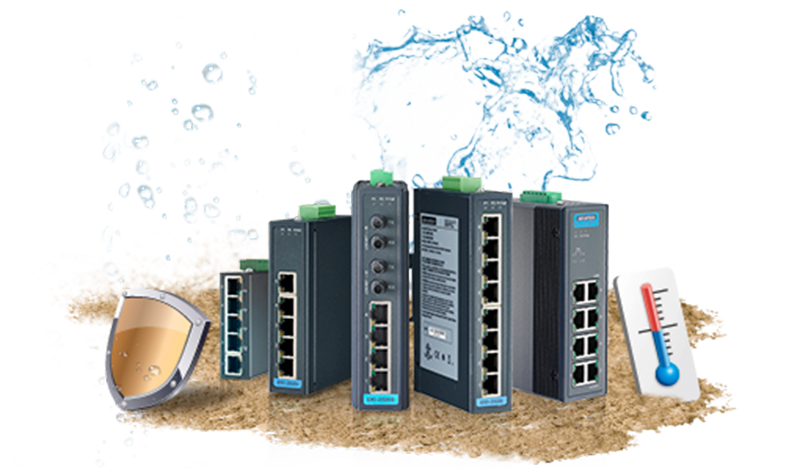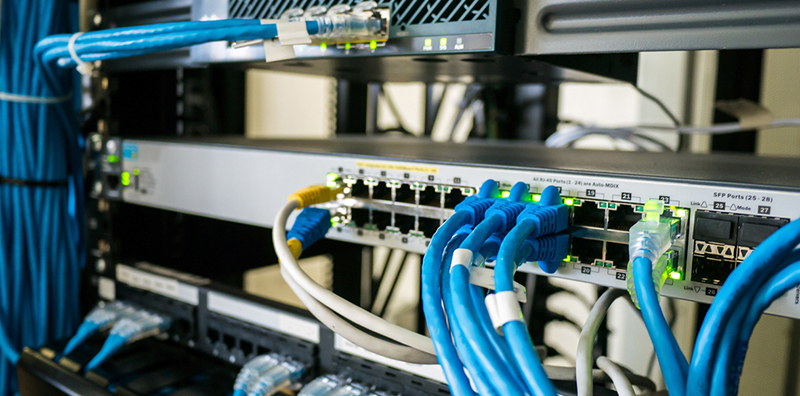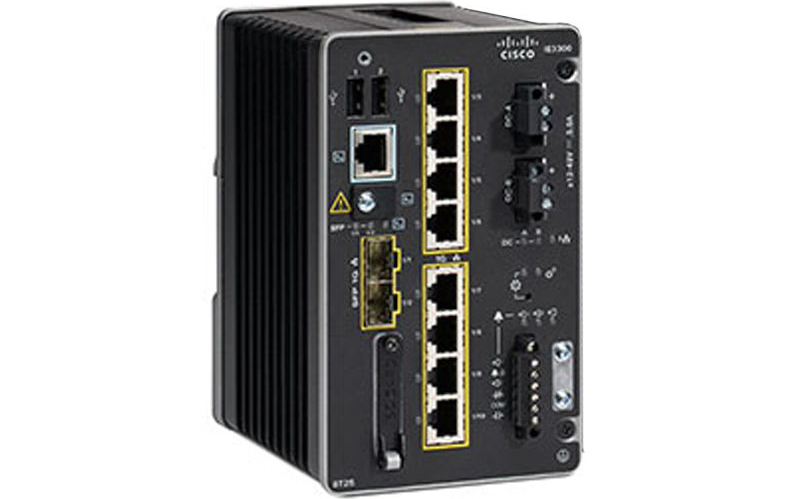
Nowadays, industrial switches play a vital role in various industries, such as energy, environmental protection, and transportation. Now the demand for industrial switches is also increasing. What is an industrial network switch? How much do you know about industrial switches?
What Is Industrial Switch?
An industrial switch can also be called an industrial Ethernet switch, which is a highly reliable and cost-effective Ethernet switch device. Designed for harsh industrial environments, which are typically subject to shock, vibration and extreme temperature fluctuations ranging from -40°C to 75°C. You’ll find industrial network switches making a significant contribution to industries such as transportation, energy, and more. Compared with ordinary Ethernet switches, industrial Ethernet switches do have many bright spots in harsh environments.
Features of Industrial Switches
Excellent construction for industrial environments
Industrial switches typically have rugged construction, such as rugged housings with IP30, IP40, or higher protection ratings, to withstand humidity, shock, vibration, and extreme temperatures. Some network switches are even equipped with 6KV lightning protection to prevent damage from lightning strikes when used outdoors. With a rugged design, industrial network switches can stably transmit data in extreme temperatures ranging from -40° to 75°C, which ordinary network switches cannot support.
Fast ring network, fast redundancy
In general, industrial Ethernet switches are characterized by fast rings and fast redundancy. Take the IE-3300-8T2S-E industrial Ethernet switch as an example, this industrial-grade switch provides up to 10 Gb high-speed Ethernet connectivity. The modular design of the Cisco Catalyst IE3300 Rugged Series provides the flexibility to expand up to 26 Gigabit Ethernet ports through a range of expansion module options.
Redundant power supply design
Power supply is another distinguishing feature of industrial switches. Industrial network switches usually use dual power redundancy to avoid power failures, which account for a large proportion of industrial switch failure rates, and ensure stable and reliable connections in harsh environments.
Flexible mounting options for DIN-rail and wall mounting
Most industrial switches have DIN rail or wall mount options. For the DIN rail option, it is ideal for efficient use of cabinet space in harsh environments. It also helps simplify installation as DIN rail industrial switches can be more easily attached to standard component rail mounting systems or long metal bars within standard cabinet racks. Also, industrial switches with DIN rail mounting options really help protect sensitive electrical equipment.
Fanless Design
Industrial Ethernet switches typically use metal enclosures instead of fans to dissipate heat faster. The fanless design of the industrial switch minimizes the problem of dust and moisture ingress. In this regard, industrial switches ensure long-term reliability in industrial applications.
Industrial switch applications
Whereas conventional Ethernet switches are not reliable enough to transmit data accurately in harsh or critical environments, industrial Ethernet switches with the above important features can challenge harsh conditions. Some typical applications of industrial Ethernet switches are as follows:
- Industrial switches in the energy industry—taking an underground mine as an example, using an industrial Ethernet switch in a coal mine can effectively block dust, dirt, and other particulate matter that may damage equipment.
- Industrial switches in the transportation industry—–Industrial switches are equipped with industrial-grade protective structures such as IP40, which can withstand high-intensity vibration and shock, and help you obtain data generated by moving objects.
- Industrial switches in substations – High electromagnetic interference is a major challenge faced by substations, and rugged, reliable and safe harsh environment switches are the answer to this problem. Because industrial switches have strong anti-interference ability, they can work in harsh electromagnetic environments, while commercial switches do not support them.
- Industrial Switches in Smart City Surveillance—–Using Industrial PoE Switches in Smart City Surveillance to provide your PoE devices (such as IP cameras) with the power they need is a smart choice for monitoring crowds and traffic. Get a powerful industrial network PoE switch to enjoy the benefits of simplified wiring and easier control of equipment.
Industrial switches at a glance
The following table lists some of Cisco’s industrial switch information, you can refer to find a suitable industrial switch.
| IE-1000-4P2S-LM | IE-2000-16TC-B | IE-3300-8T2S-E | IE-4000-8GT4G-E | IE-5000-12S12P-10G | |
| Total Ports | 6 | 20 | 10 | 12 | 28 |
| RJ45 Ports | 16 FE | 8 (10/100/1000) | 8 GE | ||
| SFP Ports | 2 FE | 2 (100/1000) | 12 (FE/GE) | ||
| Power consumption | without PoE 8.6W, with PoE 72-140.4W | 16-port downlink models: 21-30 W | 35W | Maximum of 90W not including PoE consumption | |
| PoE/PoE+ | 4 | 12 (10/100/1000M) |
Want to know more, please click here: SMB Switches, Data Center Switches, Access Switches, Cisco Switches, Aruba Switches, Ruckus Switches, UBNT Switches
Read More:
Differences Between Layer 2 and Layer 3 Switches|Which one do you need?
What are POE Switches? | 5 Things You Need to Know
Brand Switches Comparison: Cisco Switches vs Huawei Switches
Reference:Knowledge. 2022. Industrial Switch: How Much Do You Know? | FS Community. [online]





